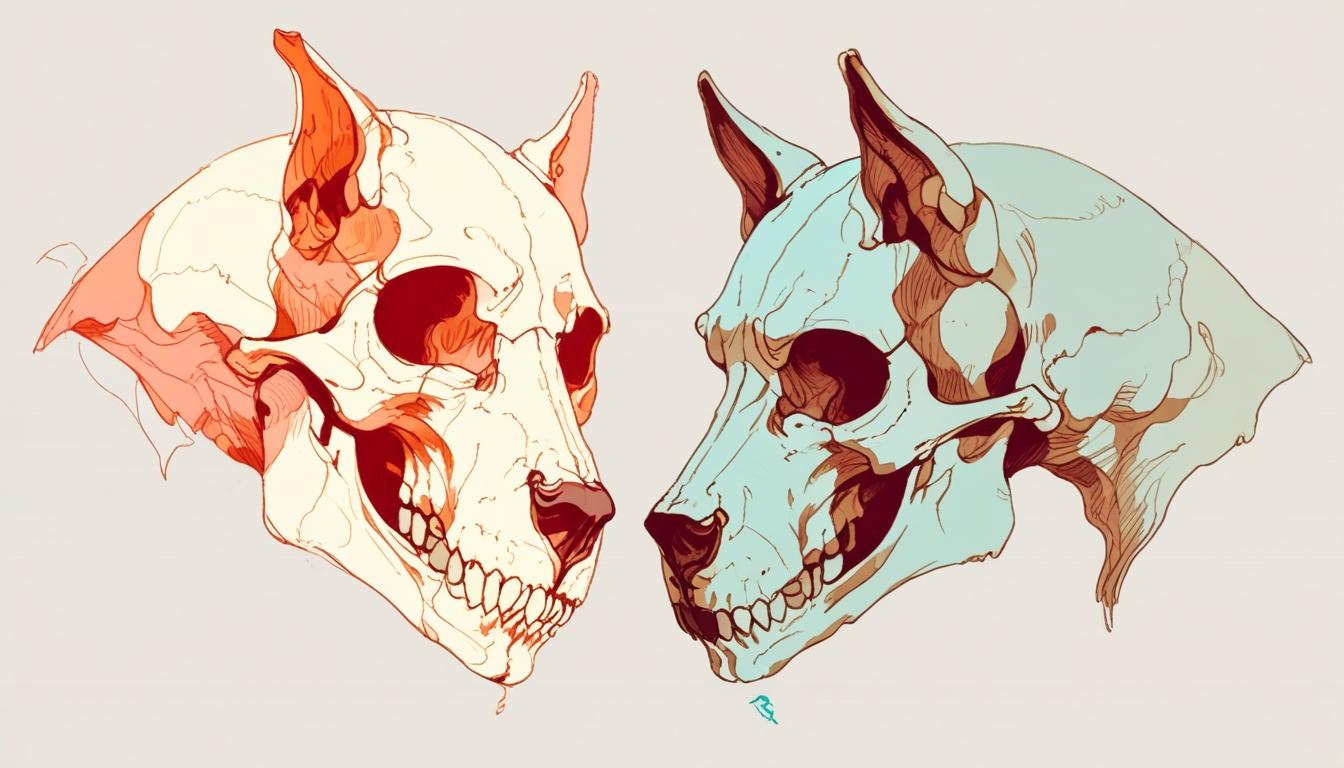Research led by evolutionary biologist Abby Grace Drake has unveiled significant health and welfare implications associated with the domestication of cats and dogs, revealing an unexpected convergence in skull shapes between diverse breeds of these animals. This surprise finding stems from a comprehensive analysis of 1,810 skulls from various domestic and wild species.
Despite the stark evolutionary divide—cats and dogs having been separated by an estimated 50 million years—the study highlights that certain breeds, such as Persian cats and pugs, exhibit remarkable similarities in their skull structures. Traditionally, evolutionary biology exemplifies divergence, where species with a common ancestor gradually evolve distinct traits. However, Drake and her colleagues have identified a trend towards convergence, whereby unrelated species develop analogous features due to shared environmental pressures and, notably, human intervention.
Utilising 3D skull scans from museum specimens and veterinary schools, the research encompassed a wide selection of domestic breeds, including Siamese and Maine Coon cats, alongside over 100 dog breeds ranging from short-muzzled pugs to long-muzzled collies. Findings indicate that domestication has amplified skull diversity beyond that seen in their wild counterparts, with both cats and dogs now showcasing extremes in features like flat or elongated faces. This phenomenon includes the emergence of breeds like those resembling XL bully dogs.
The implications of this selective breeding extend beyond mere aesthetics; significant health concerns have arisen from breeding practices aimed at emphasising specific physical traits. A report from the UK government’s Animal Welfare Committee in 2024 underscored these issues, which include serious health problems such as breathing difficulties and neurological conditions linked to extreme skull shapes. The committee advocates for stricter regulations pertaining to breeders to mitigate the prevalence of these preventable health complications among popular breeds.
Moreover, the research delves into the psychological aspects influencing human preference for certain animal traits, suggesting a deep-rooted inclination towards features reminiscent of human infants, such as rounded faces and large eyes. These so-called social releasers trigger instinctual caregiving behaviours in humans, effectively driving the selection of breeds that enhance their appeal as companion animals.
Drake posits that this growing resemblance among domestic animals highlights the significant role humans play in shaping traits through artificial selection, which contrasts sharply with the natural evolutionary paths of these species. The documentation of convergence not only emphasises the effects of selective breeding across species but raises critical awareness around the welfare of domesticated animals, reflecting on the responsibilities associated with their care and breeding practices.
Overall, this research underscores a pressing need for reflection on the long-term implications of selective breeding, as the preferences for companion animals increasingly dictate their physical traits, often to the detriment of their health and well-being.
Source: Noah Wire Services
